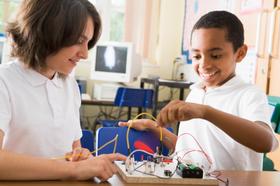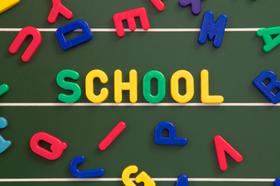For the 2025 school year, there are 4 public elementary schools serving 2,436 students in Grandview School District. This district's average elementary testing ranking is 4/10, which is in the bottom 50% of public elementary schools in Washington.
Public Elementary Schools in Grandview School District have an average math proficiency score of 40% (versus the Washington public elementary school average of 43%), and reading proficiency score of 37% (versus the 51% statewide average).
Minority enrollment is 95% of the student body (majority Hispanic), which is more than the Washington public elementary school average of 52% (majority Hispanic).
Overview
This School District
This State (WA)
# Schools
6 Schools
1,833 Schools
# Students
3,604 Students
740,174 Students
# Teachers
201 Teachers
44,879 Teachers
Student : Teacher Ratio
18:1
18:1
Student By Grade
District Rank
Grandview School District, which is ranked within the bottom 50% of all 306 school districts in Washington (based off of combined math and reading proficiency testing data) for the 2022-2023 school year.
The school district's graduation rate of 88% has decreased from 91% over five school years.
Overall District Rank
#192 out of 307 school districts
(Bottom 50%)
(Bottom 50%)
Math Test Scores (% Proficient)
37%
41%
Reading/Language Arts Test Scores (% Proficient)
39%
53%
Science Test Scores (% Proficient)
28%
49%
Graduation Rate
88%
84%
Students by Ethnicity:
Diversity Score
0.12
0.69
% American Indian
n/a
1%
% Asian
n/a
9%
% Hispanic
94%
26%
% Black
n/a
5%
% White
5%
48%
% Hawaiian
n/a
2%
% Two or more races
1%
9%
All Ethnic Groups
District Revenue and Spending
The revenue/student of $17,277 in this school district is less than the state median of $18,796. The school district revenue/student has stayed relatively flat over four school years.
The school district's spending/student of $16,950 is less than the state median of $19,246. The school district spending/student has stayed relatively flat over four school years.
Total Revenue
$62 MM
$20,715 MM
Spending
$61 MM
$21,212 MM
Revenue / Student
$17,277
$18,796
Spending / Student
$16,950
$19,246
Best Grandview School District Public Elementary Schools (2025)
School
(Math and Reading Proficiency)
(Math and Reading Proficiency)
Location
Grades
Students
Rank: #11.
Thompson Elementary School
(Math: 54% | Reading: 40%)
Rank:
Rank:
6/
Top 50%10
1105 W 2nd St
Grandview, WA 98930
(509) 882-8550
Grandview, WA 98930
(509) 882-8550
Grades: PK-5
| 569 students
Rank: #22.
Mcclure Elementary School
(Math: 50% | Reading: 40%)
Rank:
Rank:
5/
Bottom 50%10
811 W 2nd St
Grandview, WA 98930
(509) 882-7100
Grandview, WA 98930
(509) 882-7100
Grades: PK-5
| 555 students
Rank: #33.
Smith Elementary School
(Math: 47% | Reading: 30%)
Rank:
Rank:
4/
Bottom 50%10
205 Fir Ave
Grandview, WA 98930
(509) 882-8700
Grandview, WA 98930
(509) 882-8700
Grades: PK-5
| 467 students
Rank: #44.
Grandview Middle School
(Math: 31% | Reading: 38%)
Rank:
Rank:
3/
Bottom 50%10
1401 W 2nd St
Grandview, WA 98930
(509) 882-8600
Grandview, WA 98930
(509) 882-8600
Grades: 6-8
| 845 students
Recent Articles

The 15 Biggest Failures of the American Public Education System
The world is in a constant state of change and those who fail to adjust fall behind. Unfortunately, the American public education system has not kept up with the times and is currently facing a number of serious problems. Keep reading to learn about the biggest failures affecting the modern U.S. public education system as well as some of the trends that could spark change.

Florida Governor Calls for More Funding for State鈥檚 Public School System
Florida Governor Rick Scott has introduced a state budget for next year that pumps one billion more dollars into the public school system. We鈥檒l look at his reasons for the increase and the responses to the proposal.

Can Your Child鈥檚 School Meet the National Standards?
The article discusses the challenges public schools face in meeting national educational standards. It examines current performance trends, identifies key issues affecting student achievement, and explores potential solutions for improving academic outcomes across U.S. public schools.





